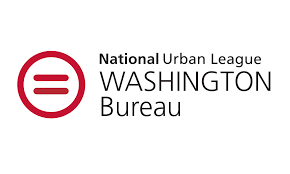Four years ago, the Russian government interfered in American elections. They stole information from campaigns, posed as Americans spreading divisive rhetoric, and attacked election infrastructure. Black voters were heavily targeted, not just as part of the American electorate, but as a specific focus of the interference.[1] In fact, the Senate Intelligence Committee’s investigation into Russian interference “found that no single group of Americans was targeted by IRA information operatives more than African-Americans.”[2]
Operatives linked to the Russian government created social media accounts that focused on “issues of sensitivity to the African-American community.” They also promoted items that expressly featured “voter suppressive content intended to dissuade African-American voters from participating in the 2016 presidential election.”[3]
We can expect that Black voters will be targeted again in 2020, but we should not assume all attacks will look as they did in 2016.
Indeed, the Senate Intelligence Committee has warned that the infrastructure attacks Russian actors attempted in 2016 may have been preparation for a more damaging assault in future elections.[4] One area of specific concern must be the protection of the election infrastructure used to register voters and cast votes. We know that Russian government agents attempted to learn about election systems, sent election observers to polling places, and targeted election system vendors.[5] They also targeted voter registration databases, perhaps to plan an attack in which “voters arrive at the polls and find that their names had been removed from the rolls.”[6] Attacks on election infrastructure could be targeted at voters with specific political affiliations, living in certain neighborhoods, or with names that are common among certain racial or ethnic groups.
Voters need not despair, however. Many state and local election officials have taken crucial steps to improve security against these sorts of attacks or to make systems of democracy more resilient if attacks do occur, such as replacing paperless voting equipment with paper ballots. Unlike paperless systems, paper ballots can be audited to check whether the machine-tabulated vote counts match up with what humans hand counting the votes would find.[7] Officials can also require polling places to keep emergency paper ballots on hand in case of machine or printer failure[8] in order to avoid long lines. And, they can require plenty of provisional ballots for voters. If there are problems with or cyberattacks on registration databases that make it unclear who is eligible to vote, provisional ballots could be counted later once the eligibility questions are resolved.[9] All of these fail-safe plans are important even if there is no attack on our elections, as long lines, failing machines, and poor election administration disenfranchise voters, especially African American voters.[10]
Of course, the COVID-19 pandemic presents new challenges, especially for Black people, who are testing positive and dying from the virus at higher rates than other groups.[11] Increasing access to vote-by-mail is one piece of what must be done to ensure voters can exercise their rights to vote without risking their health. Making it simple to vote by mail not only ensures that voters can cast ballots without risking infection, it also provides a voting method that is resistant to many forms of cyberattack as it uses paper ballots that can be audited. It also avoids the problem of malfunctioning voting machines or electronic pollbooks in polling places and the accompanying long lines.
But mail ballot systems themselves need upgrades to ensure that they work well for all voters. Studies of mail ballots in California and Florida have shown that voters of color and young voters do not have their votes counted as often as white and older voters.[12] To fix these disparities, officials should focus on voter education efforts that teach people how to obtain a mail ballot. And election officials should send an application to all those who have not applied for a ballot so they can request one. Postage should be covered, and there should also be convenient drop off options, such as secure drop boxes.[13] Placing drop boxes throughout a jurisdiction can be particularly helpful for voters who receive their ballots close to Election Day, giving them the peace of mind that their ballot was returned in time instead of having them stick it in the mail and wondering whether or not their vote will be counted.[14] Finally, if officials check a voter’s signature to see whether it matches the signature on record, the rules of the locality must be applied fairly. No ballot should be rejected without first notifying the voter and giving him or her a simple way to fix the problem. Without following up on missing and mismatched signatures, officials have no way of knowing whether, as is often the case, a voter’s signature has simply changed over time or whether a malicious actor has stolen the voter’s ballot.
While voting by mail can protect us from foreign interference or other manipulation to a certain degree, it is not without its shortcomings. Ineffective mail delivery is more common in minority communities.[15] Moreover, as we saw recently in Wisconsin[16] and Georgia,[17] mailed ballots do not always reach voters by election day. A cyberattack on the registration system could exacerbate this problem, causing mail ballots to be sent to the wrong addresses or to never be sent at all. And furthermore, some voters with disabilities cannot vote privately using a mail ballot.
These challenges are a key reason why in-person voting options must also be available for voters, and those options must be healthy and safe. Officials must provide appropriate protective equipment, such as masks for poll workers and voters, as well as enough space for voters to keep their distance from each other. Once again, resiliency measures, like having plenty of paper ballots on hand so voters can avoid exposure to infection in long lines, are crucial.
Wisconsin’s April 2020 primary showed what can happen if officials lack the time, resources, or political support to prepare for an election during the coronavirus. From the delays in mail ballots reaching voters to a lack of in-person polling places in Milwaukee, the state’s experience should serve as a nation-wide warning. Local authorities must begin to put measures in place that ensure that everyone who wants to exercise the right to vote during these unprecedented times can.
Officials across the country have already been preparing for a November election that is both threatened by foreign interference and may see a historic turnout.[18] Now, they must do so in the face of a contemporary menace: a global pandemic. To protect the vote, election officials must implement resiliency plans that can help recover lost or suppressed votes in case of an attack or malfunction. Priority must also be given to establishing a transparent and trustworthy vote-by-mail system and providing in-person voting options that follow health and government guidelines. With these initiatives, our nation can respond to this year’s public health crisis and execute an election that is fair, secure, and safe.
[1] Young Mie Kim, “Voter Suppression Has Gone Digital,” Brennan Center for Justice, Nov. 20, 2018, https://www.brennancenter.org/our-work/analysis-opinion/voter-suppression-has-gone-digital
[2] Select Comm. on Intelligence, S. Rep. No. 116-XX (Volume 2), at 6 (2019), https://www.intelligence.senate.gov/sites/default/files/documents/Report_Volume2.pdf.
[3] Select Comm. on Intelligence, S. Rep. No. 116-XX (Volume 2), at 61.
[4] Select Comm. on Intelligence, S. Rep. No. 116-XX (Volume 1), at 35 (2019), https://www.intelligence.senate.gov/sites/default/files/documents/Report_Volume1.pdf (describing a possible attempt to “catalog options or clandestine actions, holding them for use at a later date”).
[5] Select Comm. on Intelligence, S. Rep. No. 116-XX (Volume 1), at 29-30.
[6] Select Comm. on Intelligence, S. Rep. No. 116-XX (Volume 1), Minority Views of Senator Wyden, at 2.
[7] Andrea Córdova McCadney, Elizabeth Howard, and Lawrence Norden, “Voting Machine Security: Where We Stand Six Months Before the New Hampshire Primary,” Brennan Center for Justice, Aug. 13, 2019, https://www.brennancenter.org/our-work/analysis-opinion/voting-machine-security-where-we-stand-six-months-new-hampshire-primary.
[8] Karen Brinson Bell, Numbered Memo 2020-02: Ballot Preparation Instructions, North Carolina State Board of Elections, Jan. 9, 2020, https://s3.amazonaws.com/dl.ncsbe.gov/sboe/numbermemo/2020/Numbered%20Memo%202020-02_Ballot%20Preparation%20Instructions.pdf.
[9] Edgardo Cortés, Gowri Ramachandran, Elizabeth Howard, and Lawrence Norden, “Preparing for Cyberattacks and Technical Failures: A Guide for Election Officials,” Brennan Center for Justice, Dec. 19, 2020, https://www.brennancenter.org/our-work/policy-solutions/preparing-cyberattacks-and-technical-failures-guide-election-officials.
[10] See e.g., Stephen Pettigrew, “The Racial Gap in Wait Times: Why Minority Precincts Are Underserved by Local Election Officials,” Political Science Quarterly 132, no. 3 (Sept. 2017), https://www.stephenpettigrew.com/articles/pettigrew-2017-psq.pdf; M. Keith Chen, Kareem Haggag, Devin G. Pope, and Ryne Rohla, “Racial Disparities in Voting Wait Times: Evidence from Smartphone Data,” National Bureau of Economic Research, Working Paper No. 26487 (2019), https://arxiv.org/pdf/1909.00024.pdf.
[11] Clyde W. Yancy, “COVID-19 and African Americans,” Journal of the American Medical Association, Apr. 15, 2020, https://jamanetwork.com/journals/jama/fullarticle/2764789.
[12] See e.g., Dr. Daniel A. Smith, Vote-By-Mail Ballots Cast in Florida, American Civil Liberties Union Florida, 2018, https://www.aclufl.org/sites/default/files/aclufl_-_vote_by_mail_-_report.pdf; Asian Americans Advancing Justice, Asian Americans face higher than average vote-by-mail ballot rejection rates in California, 2017, https://www.advancingjustice-la.org/sites/default/files/issuebrief-vbm-FINAL-1.pdf.
[13] U.S. Election Assistance Commission, Voting by Mail/ Absentee Voting, “Ballot Drop Box” (resource created by the Cybersecurity and Infrastructure Security Agency), accessed May 6, 2020, https://www.eac.gov/election-officials/voting-by-mail-absentee-voting.
[14] See for e.g., Tierney Sneed, “Vote-By-Mail, Critical In Pandemic, Poses Risks For Voters Of Color,” Talking Points Memo, Apr. 22, 2020, https://talkingpointsmemo.com/news/vote-by-mail-covid-19-minority-voters-obstacles; Laura Schulte and Patrick Marley, “Many Wisconsin absentee ballots have returned without postmarks and may not be counted because of it,” Milwaukee Journal Sentinel, Apr. 10, 2020.
[15] Dayna L. Cunningham, Who Are to Be the Electors? A Reflection on the History of Voter Registration in the United States, 9 Yale L. & Pol’y Rev. 370, 393 (1991), https://digitalcommons.law.yale.edu/cgi/viewcontent.cgi?article=1210&context=ylpr.
[16] Daphne Chen, Marcia Robiou, Elizabeth Mulvey, Kacey Cherry and June Cross, “‘Voter Suppression at its Finest,’ Wisconsin Citizens Say Missing Ballots Kept them from Being Counted in Election,” Milwaukee Journal Sentinel, Apr. 23, 2020, https://www.jsonline.com/story/news/politics/elections/2020/04/13/wisconsin-election-missing-ballots-long-lines-kept-many-voting/2979975001/.
[17] Mark Niesse and Ben Brasch, “Absentee Ballot Requests Go Missing in Fulton Ahead of Georgia Primary,” The Atlanta Journal-Constitution, May 29, 2020, https://www.ajc.com/news/state--regional-govt--politics/absentee-ballot-requests-missing-fulton-ahead-georgia-primary/kkXUUbxL0wug5niqAvKTqM/.
[18] See e.g., Susan Milligan, “Preparing for a Voter Surge: Experts predict record voter turnout in 2020, but will it materialize?,” U.S. News & World Report, Sept. 20, 2019, https://www.usnews.com/news/elections/articles/2019-09-20/experts-predict-huge-turnout-in-2020; William A. Galston, “What does high voter turnout tell us about the 2020 elections?,” Brookings, November 20, 2019, https://www.brookings.edu/blog/fixgov/2019/11/20/what-does-high-voter-turnout-tell-us-about-the-2020-elections/ (“While the 2020 outcome may be unclear, what is clear is that turnout in 2020 could break all records and test our election machinery as it has never been tested before.”); Richard H. Pildes and Charles Stewart III, “The Wisconsin primary had extraordinarily high voter turnout,” Washington Post, Apr. 15, 2020, https://www.washingtonpost.com/politics/2020/04/15/wisconsin-primary-had-extraordinarily-high-voter-turnout/.




